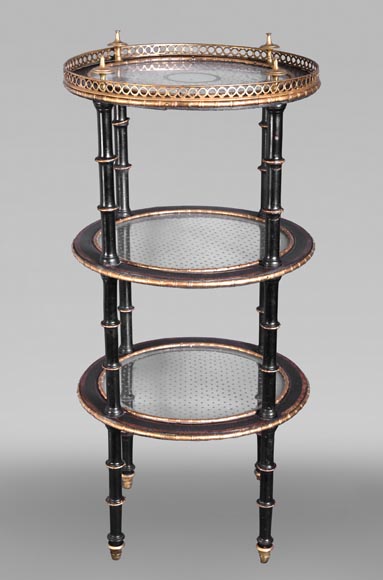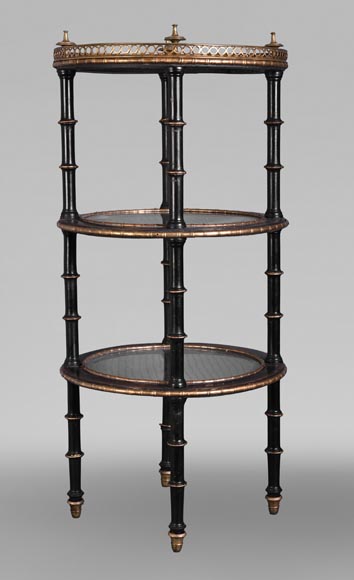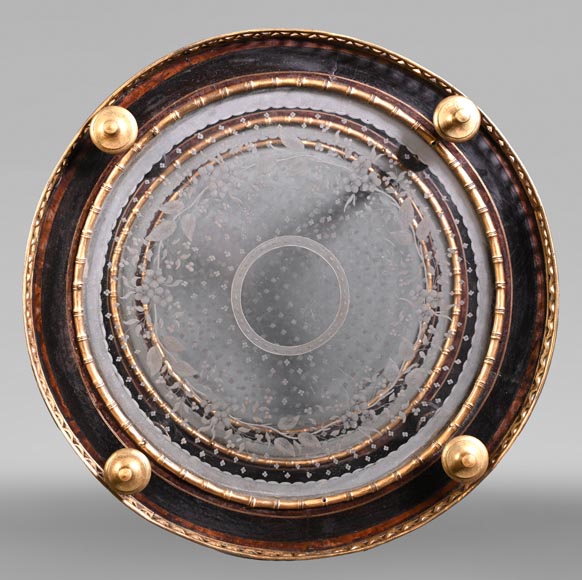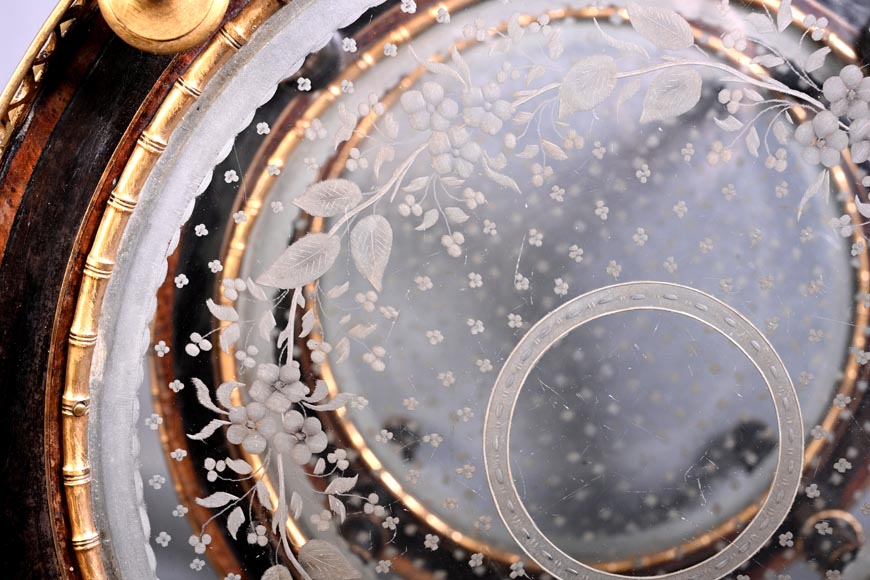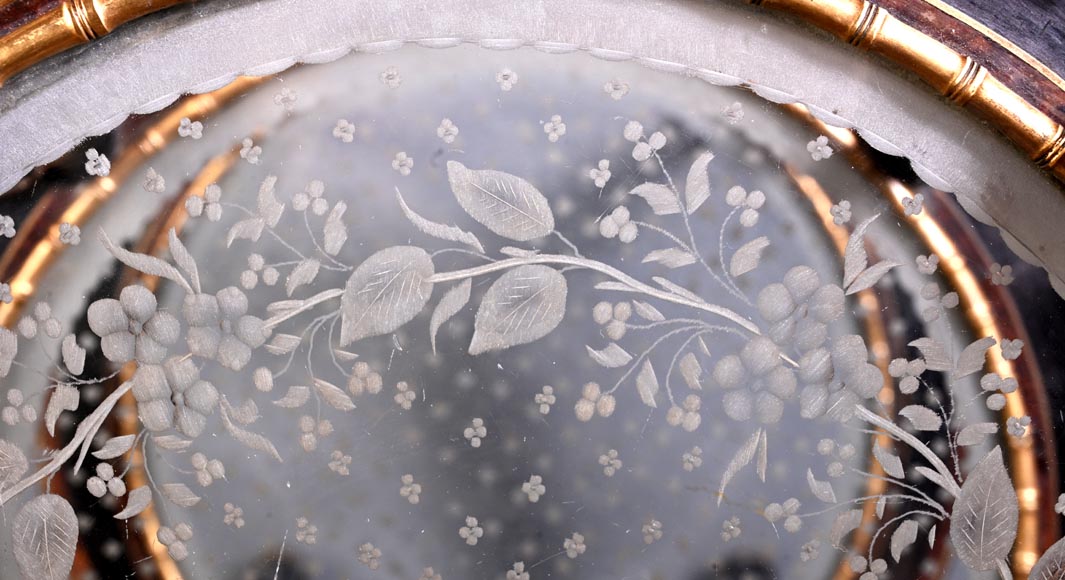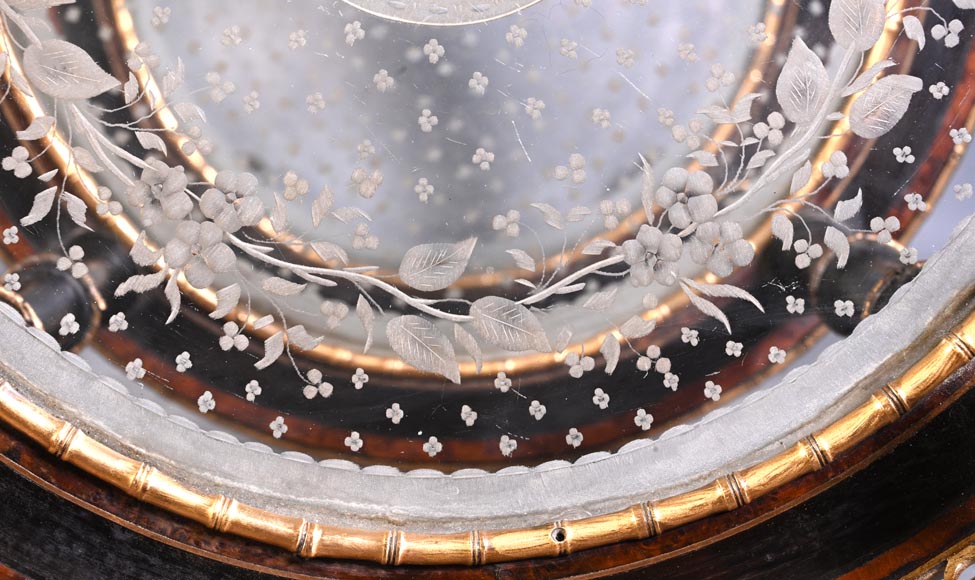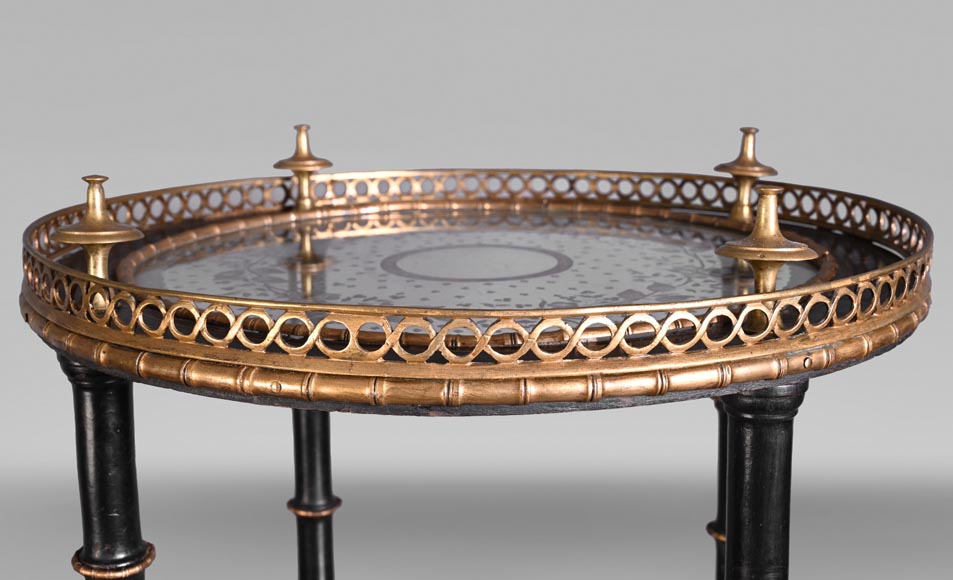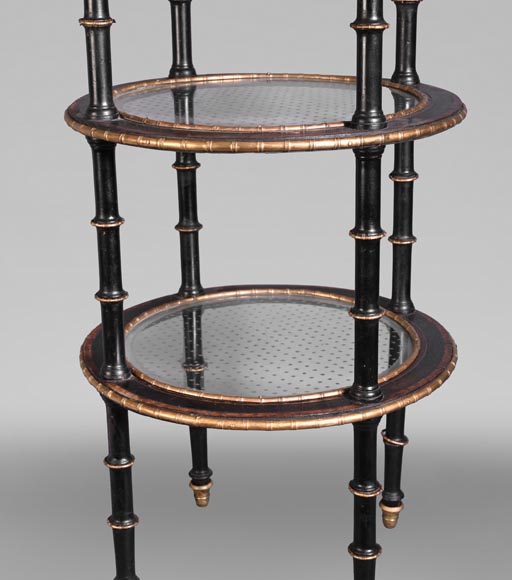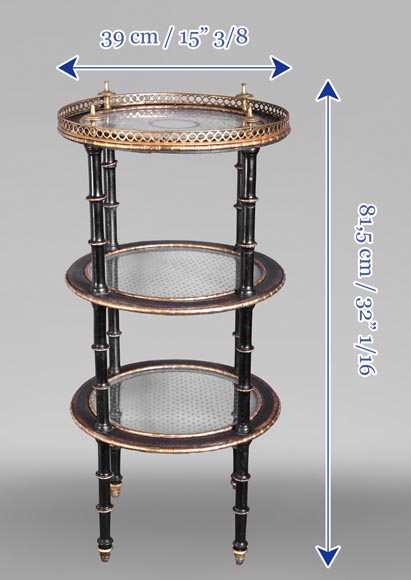Style Japonism, Chinoiserie / Ref.14968
Alphonse Giroux (in the manner of), Bamboo Decorated Gueridon, first half of the 19th century
Dimensions
Height 32'' ¼ 82cm
diameter: 15'' ⅜ 39cm
Origin:
France
This gueridon with bamboo decor was made in the spirit of Alphonse Giroux during the first half of the 19th century.
In the late 1790s, Alphonse Giroux (1775/76–1848) established a store selling artistic supplies and small objects at 7 Rue Coq-Saint-Honoré in Paris. He collaborated with artists and had a strong influence on the design of the items he sold. His shop catered to a highly distinguished clientele, including kings Louis XVIII and Charles X. In 1833, his sons, André (1801–1879) and Alphonse-Gustave (1809–1886), joined the business; under Alphonse-Gustave’s influence, the store began to create small furniture pieces like the one in question. André and Alphonse-Gustave took over the business in 1838 and remained at its helm until 1867, when it was taken over by Ferdinand Duvinage (1813–1876) and two associates.
This small table rests on four legs crafted to imitate bamboo stalks. Each protrusion marking the height of the legs is accentuated by a gilt bronze element, itself mimicking bamboo, like a mise en abyme. The gueridon has three tiers. Two of these intermediate tiers are arranged around a circle connecting the four legs, bordered by two fine golden bamboo rods. The center is occupied by a stretcher of partially frosted glass, as if surrounded by lace and sprinkled with small flowers. The top tier features decoration that also plays on transparency – and the absence of transparency – though in a more complex manner: the center is marked by a circle adorned with a frieze of garlands; on the outside, the floral motif from the lower levels reappears, itself encircled by a delicate frieze of flowers and leaves; lace transitions to the bamboo, then to two wood veneers linking the four gilded bronze caps crowning the table’s legs. A fine gilt bronze interlacing crowns the piece.
The bamboo motif was used in decorative arts from the late 18th century, which explains its presence in this period. It also returned to fashion at the end of the 19th century, aligning both with the taste for revival furniture and the vogue for Japonism. The designer of this piece offers a particularly refined and delicate interpretation of the bamboo motif with this gueridon, following in the tradition of prestigious 18th-century cabinetmakers and anticipating the trend for East Asian-inspired arts to come.
Informations
Price: on request
Recommended for you :
Dimensions:
Width: 80
Height: 102
Depth: 52
Dimensions:
Width: 226
Height: 279
Depth: 56
Dimensions:
Width: 134
Height: 220
Depth: 40
Dimensions:
Width: 108
Height: 250
Depth: 30
Dimensions:
Width: 45
Height: 74
Depth: 34
Dimensions:
Width: 60
Height: 283
Depth: 33
Dimensions:
Width: 40
Height: 100
Depth: 40
Dimensions:
Width: 87
Height: 73
Depth: 61
Dimensions:
Width: 43
Height: 102
Depth: 41
Dimensions:
Width: 37
Height: 62
Depth: 37
Dimensions:
Width: 68
Height: 77
Depth: 43
Dimensions:
Width: 44
Height: 46
Depth: 33



